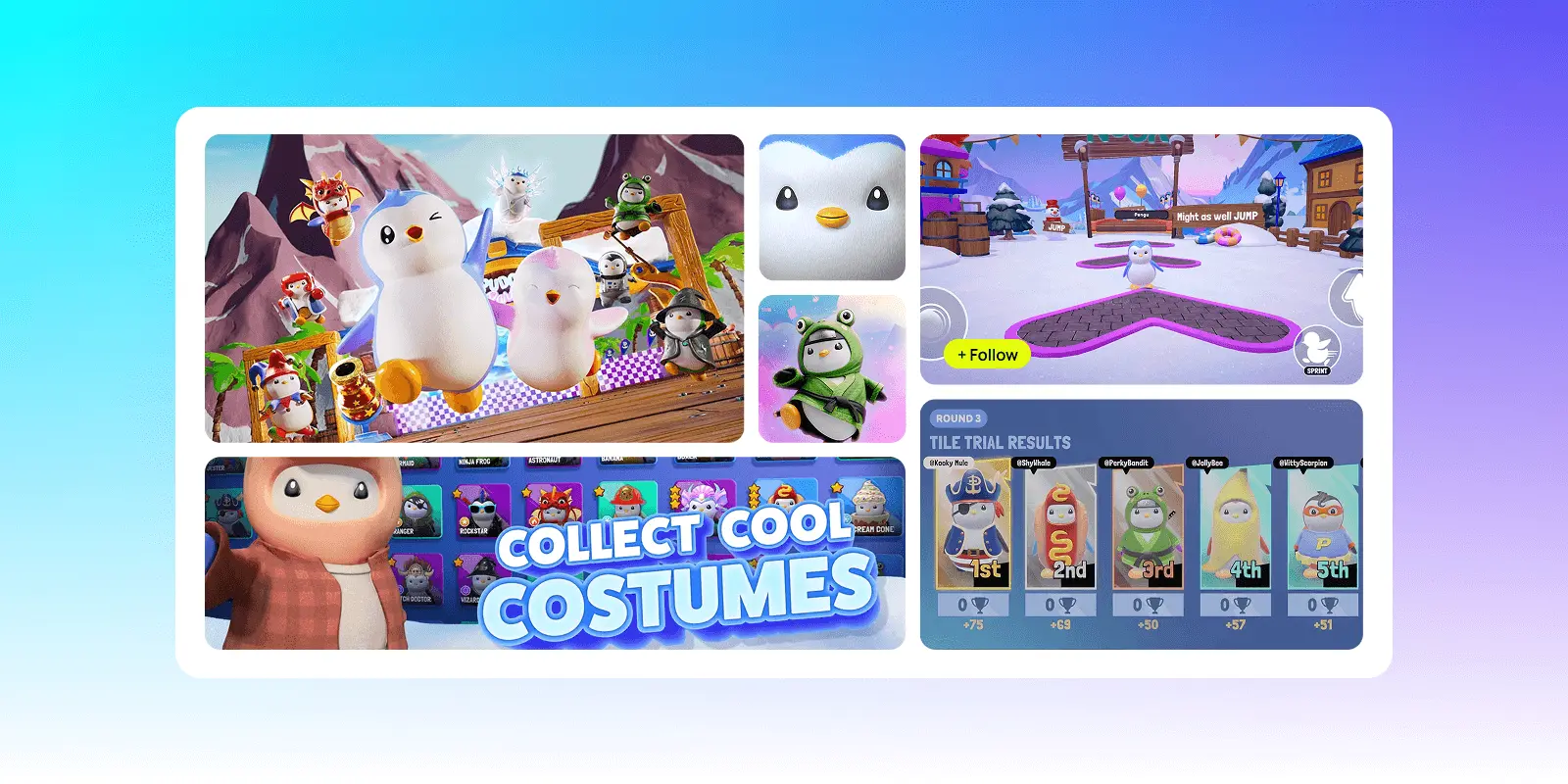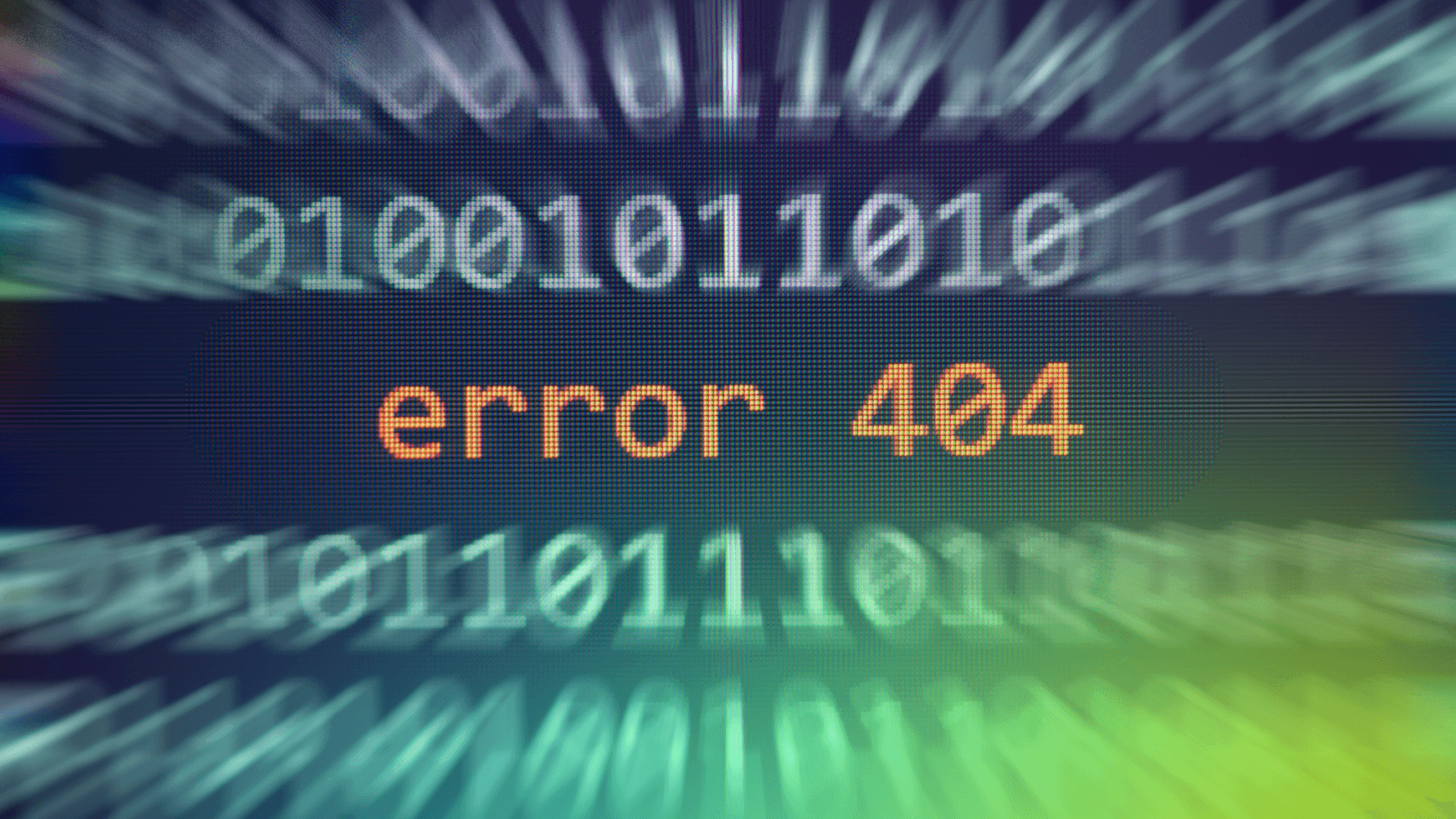Pudgy Party: The Web3 game that hides the blockchain
Pudgy Party hit 900,000 downloads in six weeks by hiding the blockchain entirely. Built on Mythos Chain, players get custodial wallets and zero gas fees without realizing it. The game proves Web3 gaming works when blockchain infrastructure becomes invisible.

What you can expect
- Why the gameplay actually works
- How blockchain stays invisible
- The technical infrastructure behind the scenes
- Pudgy Penguins' mainstream strategy
- What this means for Web3 gaming
John Pork, Tung Tung Sahur, and Ballerina Cappuccina walk into a battle royale. No, this isn't a brainrot fever dream—it's Pudgy Party, and it's one of the highest-rated blockchain games on mobile.
Launched on August 29, 2025, by Mythical Games and Pudgy Penguins, Pudgy Party surpassed 900,000 downloads by early October, earning 4.9 stars on iOS and 4.2 stars on Google Play. The game is competitive, polished, and genuinely fun. It also runs entirely on blockchain infrastructure, but most players never realize it.
Built on the Polkadot-backed Mythos Chain, Pudgy Party demonstrates what happens when Web3 infrastructure becomes invisible. Players get automatic wallet onboarding, zero gas fees, and optional NFT engagement. The blockchain enables ownership and trading for those who want it, but never interrupts gameplay for those who don't.
Could this be the blueprint for making blockchain gaming work? By examining the gameplay, the invisible infrastructure, and Pudgy Penguins' brand-first strategy, the answer might be yes.
The gameplay: why it actually works

Pudgy Party is a fast-paced battle royale that drops up to 20 players into chaotic mini-games. Each character comes with unlockable abilities that add genuine strategy to the chaos.
Take Konk, a penguin who can swing a club to knock opponents off balance. At max level, Konk unlocks a ground-smashing attack that sends nearby rivals flying. It's a small detail that transforms pure chaos into something with actual skill expression.
The mini-games themselves strike a tough balance. They're easy enough to pick up immediately—Reddit users report being able to "get some wins" within their first few sessions—but varied enough to stay interesting. What really sets the game apart is its character roster. Beyond the Pudgy Penguins themselves, the game leans into internet culture with characters like John Pork and Tung Tung Tung Sahur. Reviewers praise it for being fast, funny, and genuinely engaging.
Reviews consistently mention smooth controls and clean animations. The progression system gives players a reason to keep coming back without feeling grindy. There's one caveat: one player reported early lobbies seem filled with bots rather than real opponents, though this may change as the player base matures.
For a mobile game that launched in late August, the fundamentals are solid. Pudgy Party delivers quick, chaotic fun that's genuinely entertaining. The fact that it's built on blockchain is almost incidental to the experience.
The secret sauce: blockchain you don't see (unless you want to)
Every player unknowingly receives a custodial wallet in the background when they start playing. No setup screens. No seed phrases. No explanations. The game just works.
For most players, that's where the blockchain story ends. They play, unlock costumes, level up characters, and never think about NFTs or digital ownership. The Web3 layer is completely silent.
But for players who want to engage with it, the option exists. By connecting a Mythical account through the settings menu, players can mint certain costumes into NFTs and trade them on the Mythical Marketplace. The process requires a 3-star costume (earned through gameplay) and a matching talisman item, which can be unlocked through challenges or a $2.99 battle pass.
Importantly, this is entirely optional. One reviewer noted they "never felt I lost due to another person having a better character." The NFT layer doesn't create pay-to-win dynamics. It's purely for players who want ownership and trading as part of their experience.
The blockchain enables ownership and trading for those who want it, but never interrupts gameplay for those who don't. It's the difference between building a game around blockchain and building blockchain into a game.
The tech stack: from Mythical Games to Polkadot

Pudgy Party brings together three key players: Pudgy Penguins' viral IP and mainstream reach, Mythical Games' expertise in blockchain gaming, and Polkadot's infrastructure that can handle millions of transactions without players noticing.
Mythical Games chose Polkadot after struggling with Ethereum's high gas fees and slow transaction speeds. Polkadot's modular architecture and shared security model gave them the performance they needed for gaming at scale. The results speak for themselves: NFL Rivals processed over 3 million transactions in its first 48 hours on Polkadot without any technical issues.
Pudgy Penguins needed a partner who could build a high-quality game that wouldn't alienate their mainstream audience with complicated blockchain mechanics. Mythical's experience creating custodial wallets and invisible onboarding made them the right fit. Their Mythos Chain, a Polkadot rollup (i.e., parachain), now hosts not just Pudgy Party but also FIFA Rivals, NFL Rivals, and Dmarket.
The combination works because each piece solves a specific problem. Polkadot provides the speed and low costs. Mythical provides the gaming expertise and invisible Web3 layer. Pudgy Penguins provides the cultural relevance and built-in audience. Together, they've created a game where the blockchain enables features without dominating the experience.
The Pudgy Penguins playbook: brand first, crypto never
Pudgy Penguins started as an Ethereum NFT collection, but they didn't stay there. While most NFT projects doubled down on crypto-native audiences, Pudgy Penguins expanded outward. Their plush toys now sit on shelves at Walmart and Target. Their social media content leans into wholesome memes and relationship humor, not blockchain jargon. They built mainstream recognition that most Web3 projects never achieve.
This matters because it changes how Pudgy Party can approach its audience. Instead of needing to explain NFTs or blockchain to potential players, the game can lean on existing brand awareness. Mythical Games CEO John Linden called Pudgy Penguins "the only Web3 project to truly go mainstream" because they successfully bridged both worlds.
The game reflects this strategy. Marketing focuses on gameplay, characters, and memes. The blockchain elements are mentioned sparingly, if at all. Pudgy Party isn't trying to convert Web2 gamers into Web3 users or educate them about digital ownership. It's just giving them a fun game to play, with optional Web3 features for those who want them.
It's a subtle but important distinction, and it's working.
Conclusion: the blueprint finally exists
Pudgy Party demonstrates what happens when Web3 gaming stops leading with Web3. The game hit 900,000 downloads in roughly six weeks not because it has NFTs, but because it's genuinely fun to play. The blockchain layer exists to enable ownership and trading for players who want it, not to gatekeep the experience.
The formula is straightforward: build a quality game first, make the blockchain infrastructure invisible, and offer digital ownership as an option rather than a requirement. Polkadot and Mythos Chain provide the technical foundation that makes this approach possible—fast enough and cheap enough that players never notice the blockchain working in the background.
Whether this becomes the standard approach for Web3 gaming remains to be seen. But Pudgy Party proves it's possible to build blockchain games that feel like games first and blockchain projects second. For an industry that has struggled with mainstream adoption, that might be the most important milestone yet.












